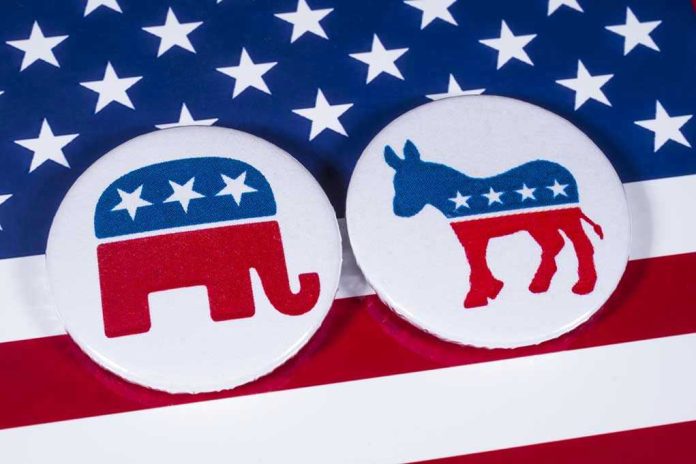
Two states hold the nation’s political future in their hands this November, and with three weeks left, both gubernatorial races have exploded into chaos that could reshape American politics for years to come.
Story Snapshot
- Only New Jersey and Virginia are electing governors in 2025, making these races critical national bellwethers
- Both contests feature open seats with no incumbents, creating unprecedented competitive opportunities
- Late-breaking controversies and tightening polls have turned both races into toss-ups
- National parties are pouring resources into these elections as early tests for 2026 midterm strategy
- Results will be interpreted as the first major referendum on post-2024 political momentum
The Perfect Storm of Political Timing
Political lightning rarely strikes twice in the same year, but 2025 defies conventional wisdom. New Jersey and Virginia, the only states conducting gubernatorial elections, find themselves at the epicenter of a national political earthquake. Both governors face term limits, creating rare open-seat battles that have attracted heavyweight candidates and massive outside spending. The timing couldn’t be more crucial, coming just one year after a presidential election that left both parties searching for direction.
These aren’t typical off-year elections flying under the radar. National party committees have designated both contests as strategic priorities, flooding airwaves with advertisements and deploying former presidents as campaign surrogates. The stakes extend far beyond state capitols, with winners likely to influence redistricting, set policy precedents on hot-button issues, and potentially launch themselves onto the national stage for future federal campaigns.
New Jersey’s High-Stakes Democratic Showdown
Mikie Sherrill’s path to the Democratic nomination seemed straightforward until it wasn’t. The former Navy helicopter pilot and current congresswoman faces Republican Jack Ciattarelli in a rematch of sorts, though Ciattarelli previously lost to outgoing Governor Phil Murphy. Sherrill has anchored her campaign on reproductive rights and gun safety, issues that traditionally favor Democrats in the Garden State. Yet polling suggests the race remains surprisingly competitive despite New Jersey’s recent Democratic lean.
Ciattarelli has crafted a different narrative, focusing relentlessly on tax relief and parental rights in education. His strategy mirrors successful Republican campaigns in purple states, avoiding divisive social issues while hammering Democrats on pocketbook concerns. The approach gained traction as property tax complaints dominate suburban town halls, creating an opening that seemed impossible just months ago when Sherrill appeared to have a commanding lead.
Virginia’s Battle for the Commonwealth’s Soul
Virginia’s contest between Winsome Earle-Sears and Abigail Spanberger represents a fascinating clash of political styles and generational approaches. Earle-Sears, the current lieutenant governor, would make history as the state’s first Black female governor if elected. Her campaign emphasizes conservative values while attempting to expand the Republican coalition beyond traditional boundaries. Meanwhile, Spanberger brings congressional experience and moderate credentials that appeal to Northern Virginia’s educated suburban voters.
Recent polling shows Earle-Sears narrowing what was once a comfortable Spanberger lead, with the gap shrinking to just three points in the final weeks. The tightening race has sent shockwaves through Democratic circles, who viewed Virginia as a safer bet than New Jersey. Federal government shutdown fears and DOGE spending cuts have emerged as unexpected campaign issues, reflecting how national politics increasingly influence state races in ways that would have seemed impossible a generation ago.
National Implications Beyond State Borders
Political analysts universally describe these contests as early warning signals for national trends, though they caution against over-interpretation. Historical precedent suggests off-year gubernatorial results often foreshadow midterm congressional outcomes, making November 4th a crucial data point for both parties’ 2026 strategies. Democratic victories would validate messaging on reproductive rights and democracy protection, while Republican wins could signal broader conservative momentum building across suburban America.
The economic implications extend beyond typical campaign rhetoric. Tax policy, business regulation, and state budget priorities hang in the balance, with winners potentially implementing dramatically different approaches to governance. Education and healthcare sectors are watching closely, as both races feature sharp disagreements over funding levels, regulatory approaches, and federal coordination. These policy differences could create laboratory experiments for national political movements, influencing federal legislative priorities and presidential campaign platforms in 2028.
Sources:
Wikipedia: 2025 United States gubernatorial elections
270toWin: 2025-26 Gubernatorial Elections Map
Stateside: 2025 Gubernatorial Races
Brownstein: Gubernatorial Elections in 2025 and 2026
Wikipedia: 2025 United States elections
270toWin: 2025-2026 Governor Election Forecast Maps
NCSL: For an Odd Year, 2025 Packs Big Elections



